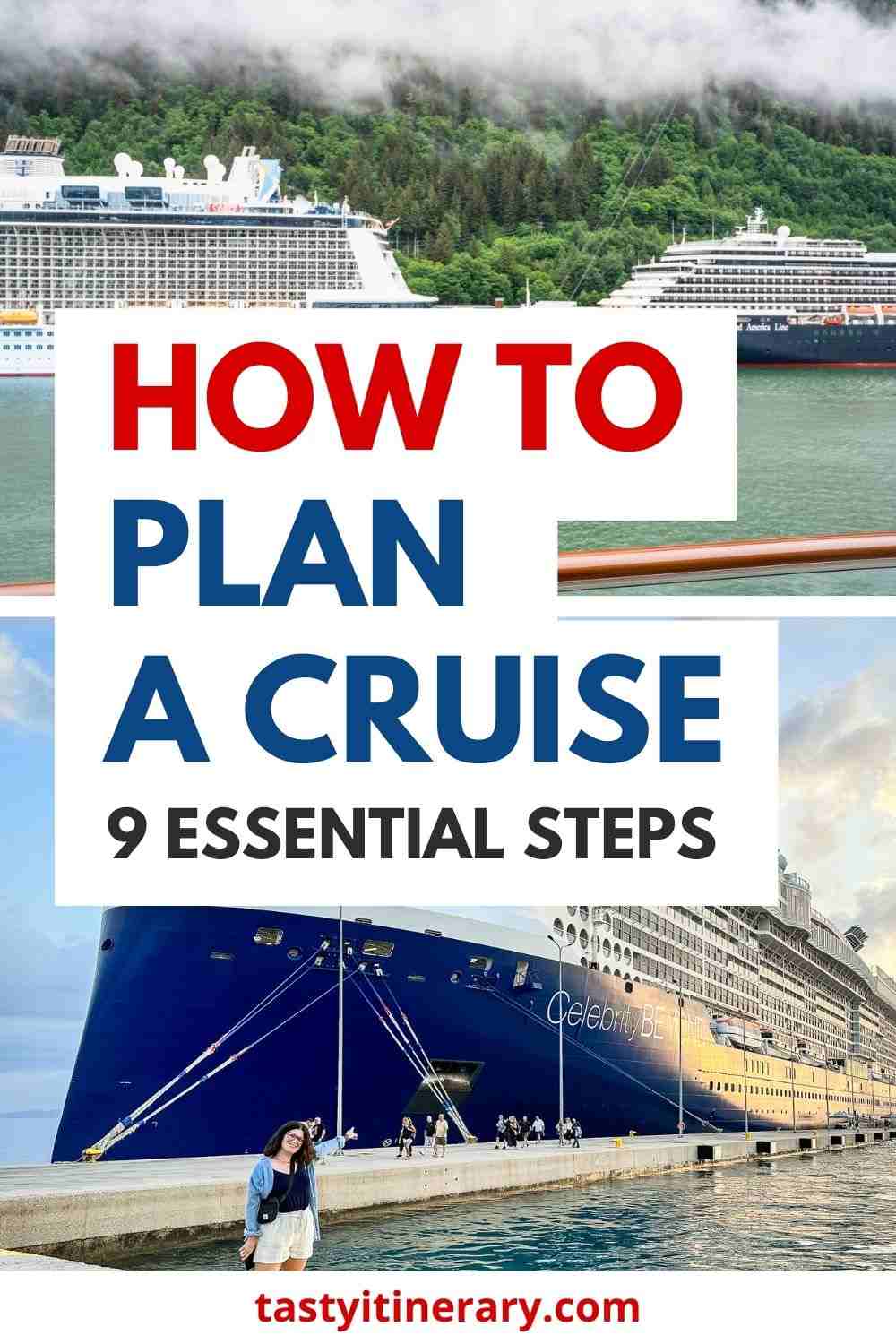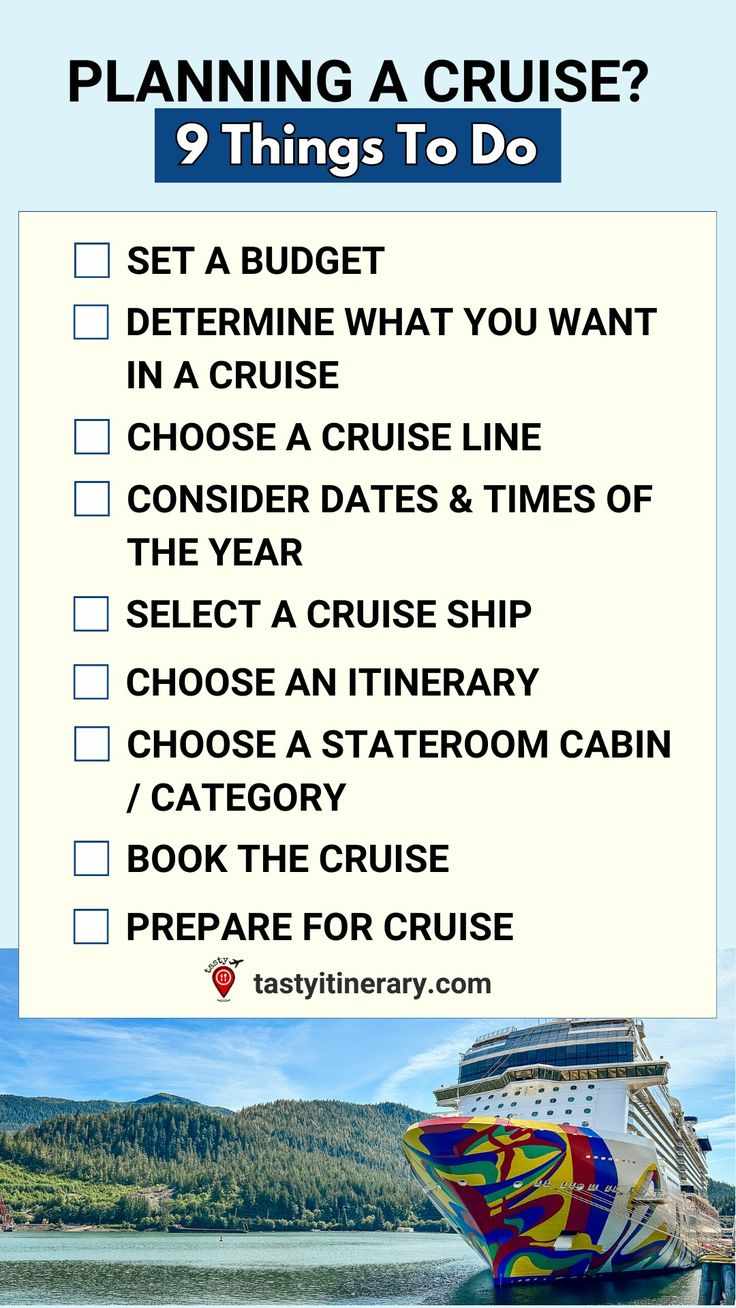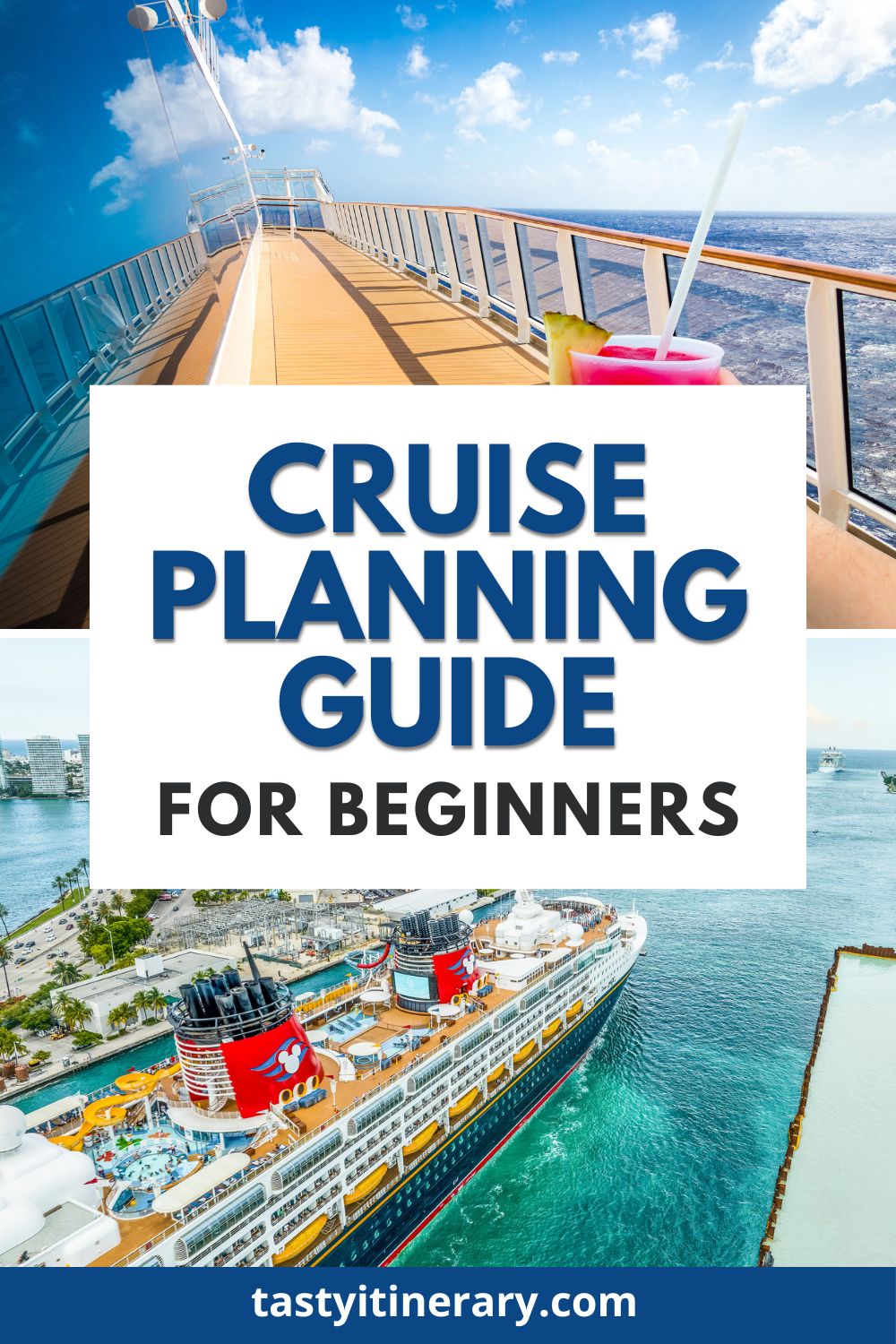How to Plan a Cruise Vacation With These 9 Essential Steps
How to plan a cruise? Planning a cruise vacation sounds simple, but the options can pile up fast and leave you wondering where to begin. Even after countless cruises, I still walk through the same core steps every time because they truly make or break the experience.
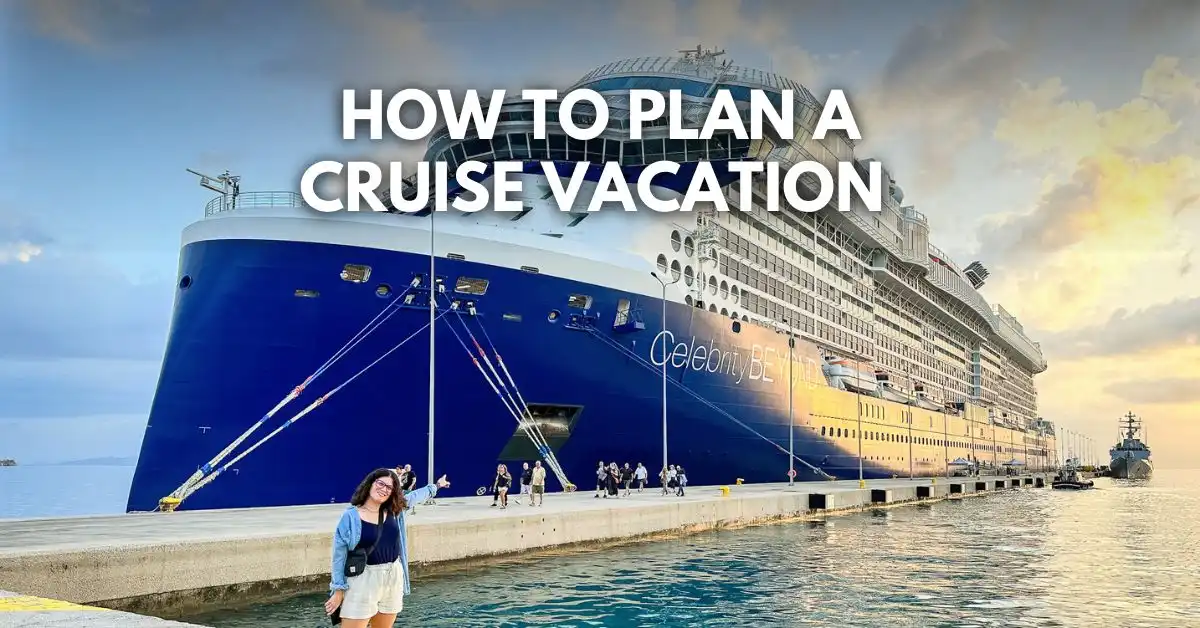
Disclaimer: This post may contain affiliate links, meaning we earn a commission at no extra cost. Please refer to our full disclosure for details.
Choosing a cruise is almost always a combination of three factors: itinerary, cruise ship, and budget. Once those fall into place, the rest gets much easier.
This guide walks you through nine practical steps to help you narrow down your choices, avoid common mistakes, and book a cruise that fits your travel style. Consider this your starting point to planning a smooth, enjoyable cruise vacation from day one.
Start Planning Your Cruise by Setting a Realistic Budget
Set a budget before you start looking at cruises—it’ll instantly narrow your options and make planning easier. Check sites like CruiseDirect or the cruise line’s own website to get a feel for pricing, promotions, and what’s included. For instance, Norwegian Cruise Line often runs its Free at Sea promotion that includes a drink package and, on occasion, a free 3rd & 4th guest, which can be a significant savings for families.
Cruise fares typically cover your cabin, meals, and entertainment; however, plan for additional expenses such as flights, transfers, shore excursions, and drinks. Cruise lines or travel agents can bundle these for you, but that’s not always the most budget-friendly route. Keep in mind, the lowest fare isn’t always the best fit for your travel style.
Choose the Cruise Experience That Fits You Best

Once you have a budget, consider the type of cruise you want. Are you looking for relaxing sea days or a trip packed with ports? Do you want tropical beaches, historic cities, or rugged scenery?
Narrow your options by region. The Caribbean, Mexico, the Mediterranean, and Alaska each offer a completely different experience. Once you know what appeals to you most, the rest of the planning falls into place.
Read more: How to Choose a Cruise
Choose a Cruise Line That Matches Your Travel Style
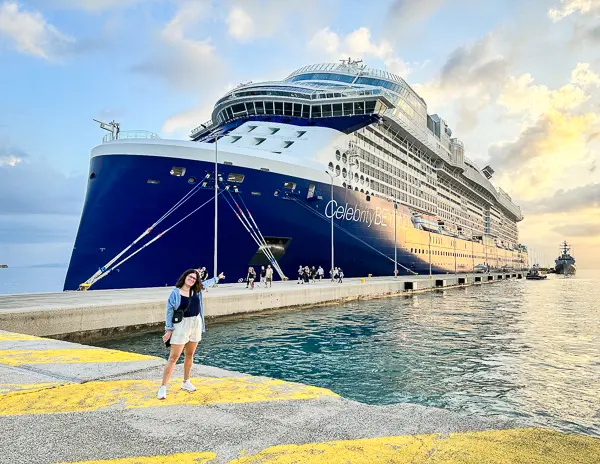
The cruise line can make or break a vacation. Each cruise line has its unique style and vibe, so finding one that matches your interests and needs.
Some cruise lines even focus on specific themes or demographics, so think about your travel style, the onboard experience you want, and the kind of crowd you’ll enjoy sailing with.
Choose the Best Time of Year for Your Cruise
Timing matters. Prices and weather can vary depending on the season, so decide early what works best for you. Being flexible with your travel dates can help you find lower fares, while sailing during holidays or summer usually costs more.
If you’re looking for value, consider shoulder seasons or less busy months. Some destinations, including Alaska, operate only during specific months, while others, such as the Caribbean and Hawaii, are available year-round. Once you’ve decided when you want to go, you’ll be ready to book with confidence.
Cruise Tip: See if you have a cruise port within driving distance. Sailing from a nearby home port can make it easier to grab last-minute deals and save on flights and pre-cruise hotel stays.
Pick a Cruise Ship That Fits Your Priorities

When choosing a ship, consider how it aligns with your itinerary and travel dates. If you already know where you want to sail, that will likely guide your ship choice, since certain vessels are assigned to specific routes. If you’re set on a particular ship, look for itineraries that fit your schedule.
I usually prioritize the itinerary first, but the ship still matters. Keep these factors in mind when deciding:
- Ship size and passenger capacity
- Age and refurbishment history
- Passenger demographics
- Onboard activities and amenities
- Dining options
- Cabin layouts and sizes
Find a ship that matches what you want out of your cruise. Ships in the same class within a cruise line often feel similar but still have unique touches worth considering.
Choose a Cruise Itinerary That Matches Your Travel Style

The cruise itinerary is one of the most important parts of planning your trip. You might already know where you want to go, or you could be drawn to a ship or cruise line first—it happens both ways. Try to find a balance between port days and sea days that fits your preferences.
- Active cruises: If you enjoy exploring, look for itineraries with more port stops. You’ll get to experience new destinations almost every day while still returning to the ship for dinner and evening activities.
- Leisure cruises: If you’d rather unwind, choose an itinerary with more sea days so you have time to relax and make the most of the ship’s amenities.
You can also check travel advisories and stay updated on local conditions before you book. Cruise lines don’t sail anywhere unsafe, but it’s always smart to be informed.
Pick the Right Stateroom for Your Needs
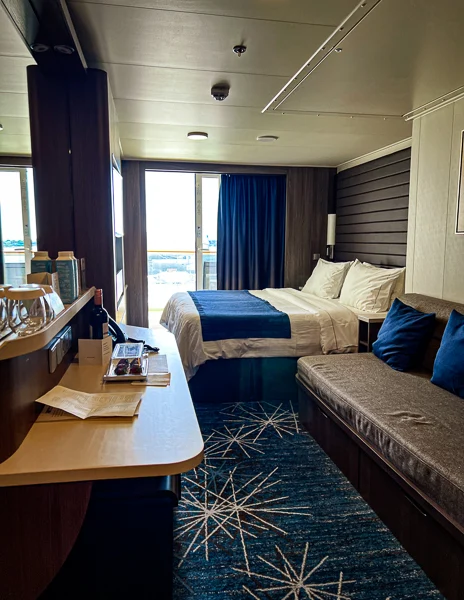
After finalizing your ship, date, and itinerary, the next step is to choose a stateroom. Your decision depends on your budget, cabin size, preferred location on the ship, and desired amenities.
Stateroom categories range from budget-friendly interior cabins without windows to suites with balconies in prime locations. While suites have a higher price tag, there are options to fit almost any budget.
For solo travelers, check for cruise lines that offer single-occupancy cabins or reduced solo fares.
When deciding, keep these factors in mind:
- Proximity to onboard activities
- Desire for a quiet location
- Sensitivity to motion (mid-ship cabins have less movement)
Think about how much time you’ll spend in your cabin, too. If you plan to be out exploring the ship and ports, an inside cabin may be all you need. But if you enjoy private outdoor space or morning coffee with a view, a balcony cabin is worth it.
Cruise Research Tip: Search YouTube for cruise cabin tours to get an idea. You may even find the exact cruise cabin you’re thinking of booking on the cruise.
Decide How You’ll Book Your Cruise
Once you’ve chosen your ship, itinerary, dates, and cabin, it’s time to book. You can reserve your cruise directly with the cruise line, through a travel agent, or via an online travel agency.
Booking Directly with the Cruise Line
- Pros: You’ll have direct access to promotions and can work with the cruise line for any issues.
- Cons: You might miss out on extra perks like onboard credits or upgrades that travel agents can sometimes offer.
Booking Through a Travel Agent
- Pros: A good agent can access exclusive deals, handle all the details, and give personalized advice. They’ll also step in if problems arise with the cruise line.
- Cons: If you end up with a less reliable agent, customer service can suffer. The cruise line can’t assist directly with third-party bookings.
Booking Through an Online Travel Agency
- Pros: Easy to compare ships, dates, and prices in one place, often with good deals.
- Cons: Limited personal service and slower responses to specific requests or issues.
Travel agents or online agencies can be especially helpful for first-time cruisers. Whichever route you choose, make sure it’s a reputable, customer-focused provider. Read reviews, ask around, and don’t be afraid to get recommendations from cruise groups or experienced travelers.
Step Nine: Preparing for Your Cruise

Congratulations—your cruise is booked! Now comes the fun part: getting ready for your trip. For a full breakdown, check out our detailed guide to cruise preparation, but here are some key things to handle before embarkation.
Common Questions About Planning a Cruise
Start Planning a Cruise by Setting a Budget and Choosing Your Cruise Style
Start planning your cruise by setting a budget, choosing a cruise line, selecting your destination, itinerary, and travel dates, and booking your trip.
Cruise Costs Vary Widely Depending on Destination, Cruise Line, and Season
Cruise trip costs vary based on length, destination, cruise line, and time of year. You’ll see entry-level sailings starting around $40 per person per day, while premium and luxury lines can easily run $300–$500+ per person per day, sometimes even more. Note that extras such as drinks, specialty dining, excursions, and travel to the port will increase your overall cost.
The Best Way to Plan a Cruise Is to Research and Book Early
Set a budget, research different cruise lines and itineraries, and find one that fits your travel style. Once you’ve decided, book your cruise and start preparing for your trip.
First-Time Cruisers Should Research and Ask for Advice
If you’re planning your first cruise, read reviews, ask friends who’ve cruised, and compare cruise lines and destinations. Then, reach out to the cruise line or a trusted travel agent to book with confidence.
Book 12 to 18 Months Ahead for the Best Selection — or Watch for Last-Minute Deals
Booking 12 to 18 months in advance usually secures the best cabin choices and early-bird rates, especially for popular itineraries or cabins with limited availability. If you’re flexible, waiting for last-minute deals can pay off, too, but you’ll have fewer options left.
Avoid Choosing a Cruise Just Because It’s the Cheapest
Don’t book the lowest fare without checking the cruise line and ship details. Picking the wrong fit can sour your experience, especially if it’s your first cruise.
BEFORE YOU SET SAIL, HERE ARE SOME RELATED ARTICLES YOU DON’T WANT TO MISS:
Kathy Ava
Meet Kathy Ava, a food, travel, and cruise writer based in Los Angeles/Pasadena, and the owner and main writer of Tasty Itinerary. With over 20 years of experience planning trips and logistics at her full-time job and for herself, she's become a pro at crafting unforgettable tasty itineraries. She's always on the hunt for delicious, fun travel destinations and cruise itineraries. She firmly believes that life is short and we must make the most of it, so always say yes to dessert.

